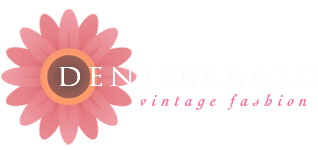These few definitions (derived from Fairchild's Dictionary of Textiles) don't cover fabrics themselves, but seem to me to be important for understanding fabrics:
Brushed: A finish produced on knit or woven fabrics in a process in which brushes or other abrading or brushing elements are used to raise a nap.
Calendered: A finish produced by passing fabric under pressure between cylinders. The number of cylinders varies, and the greater the heat and pressure, the greater the luster. The process produces a flat, glossy and smooth surface on the fabric.
Filling: The yarn that runs from selvage to selvage at right angles to the warp. Each yarn of the filling is called a pick (most common), shoot, shot, or shute.
Fulled: A finish produced on woolens or worsted in which the newly woven or knitted cloth is felted or compressed. The material is subject to moisture, heat, friction and pressure, causing it to shrink considerably in both directions, becoming compact and solid. In heavily fulled fabrics, both the weave and yarn are obscured entirely, giving the appearance of felt.
Napped: A finished produced on certain woolens, cottons, spun silks and spun rayons, consisting of raising a nap on the fabric. A napper machine has rapidly revolving cylinders covered with fine wire brushes which lift loosely twisted yarns from the fabric to form the nap.
Mercerized: Cotton yarn or fabric which has been treated by swelling in strong alkali. The material in the form of warp, skeins or piece goods is immersed in sodium hydroxide (caustic soda) solution. Later this is neutralized in acid. The process causes a permanent swelling of the fiber, increasing its luster, strength, and affinity for dyes.
Slub: A thick, unevenly twisted place in yarn. May be deliberately inserted in a fancy yarn or a flaw in yarn that is supposed to be of uniform diameter.
Wale: One of a series of ribs, cords, or raised portions usually in the fabric length.
Warp: A yarn that runs lengthwise in a woven fabric, parallel to the selvages. Warp ends interlace with the filling yarns (picks) in different patterns to form different weaves.
Next: My "first impression" method for determining a fabric.
Brushed: A finish produced on knit or woven fabrics in a process in which brushes or other abrading or brushing elements are used to raise a nap.
Calendered: A finish produced by passing fabric under pressure between cylinders. The number of cylinders varies, and the greater the heat and pressure, the greater the luster. The process produces a flat, glossy and smooth surface on the fabric.
Filling: The yarn that runs from selvage to selvage at right angles to the warp. Each yarn of the filling is called a pick (most common), shoot, shot, or shute.
Fulled: A finish produced on woolens or worsted in which the newly woven or knitted cloth is felted or compressed. The material is subject to moisture, heat, friction and pressure, causing it to shrink considerably in both directions, becoming compact and solid. In heavily fulled fabrics, both the weave and yarn are obscured entirely, giving the appearance of felt.
Napped: A finished produced on certain woolens, cottons, spun silks and spun rayons, consisting of raising a nap on the fabric. A napper machine has rapidly revolving cylinders covered with fine wire brushes which lift loosely twisted yarns from the fabric to form the nap.
Mercerized: Cotton yarn or fabric which has been treated by swelling in strong alkali. The material in the form of warp, skeins or piece goods is immersed in sodium hydroxide (caustic soda) solution. Later this is neutralized in acid. The process causes a permanent swelling of the fiber, increasing its luster, strength, and affinity for dyes.
Slub: A thick, unevenly twisted place in yarn. May be deliberately inserted in a fancy yarn or a flaw in yarn that is supposed to be of uniform diameter.
Wale: One of a series of ribs, cords, or raised portions usually in the fabric length.
Warp: A yarn that runs lengthwise in a woven fabric, parallel to the selvages. Warp ends interlace with the filling yarns (picks) in different patterns to form different weaves.
Next: My "first impression" method for determining a fabric.
